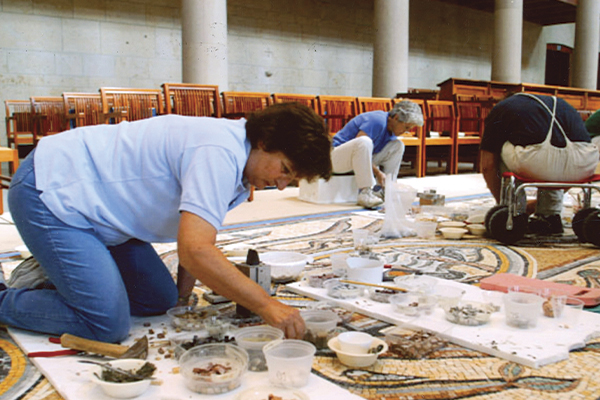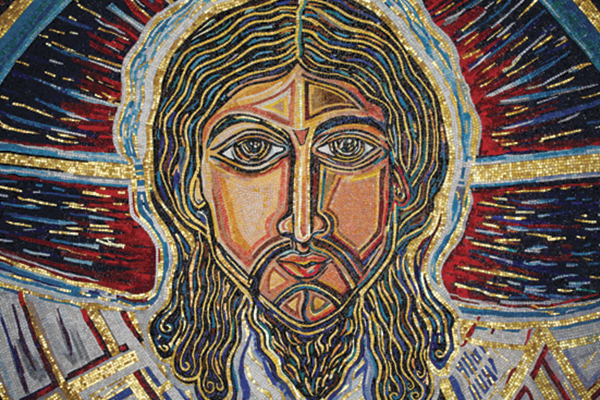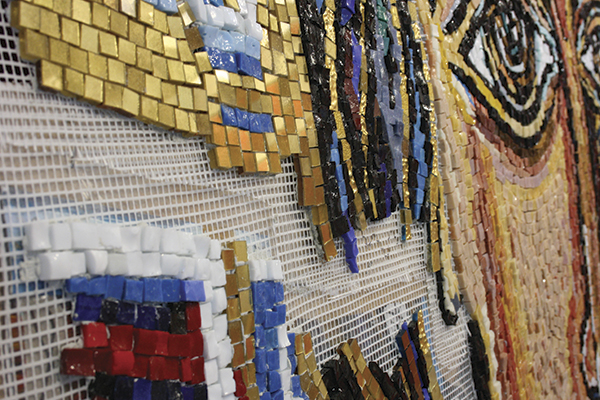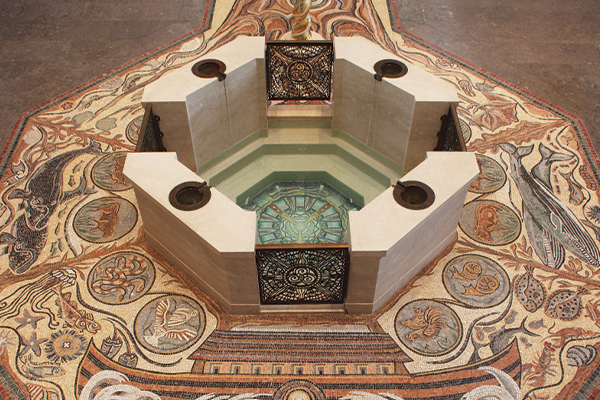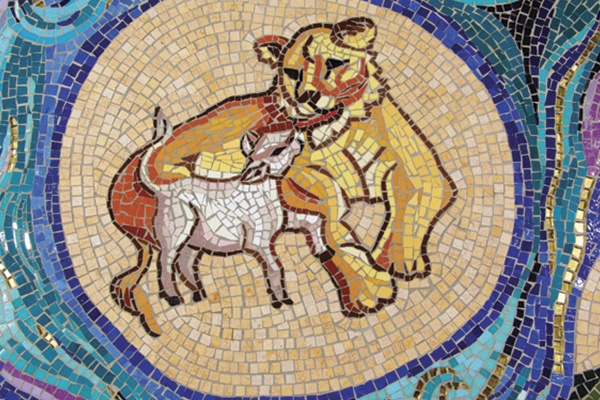Mosaic
The mosaics in the Church of the Transfiguration are created in the ancient tradition of Byzantine-style mosaics. Each full-scale drawing that was first painted on cardboard by Helen McLean (processional path, apse, font floor, and ambo platform) and by Community members (sanctuary floor) was cut into pieces and sent to the studio of Alessandra Caprara in Ravenna, Italy. There she overlaid the painting with paper and outlined every color of natural stone or fired glass to be used. Each piece was hand-cut and placed in a binding material, either directly (for the wall) or indirectly (for the floor), and shipped to Cape Cod, where it was laid out like a jigsaw puzzle and installed with seams and gaps filled in on location. Members of the Community who trained with Alessandra, traveled to the studio in Ravenna, assisting with cutting and placement of the tesserae under her direction. The floor mosaic took five years to complete, and the apse mosaic took three years to complete.
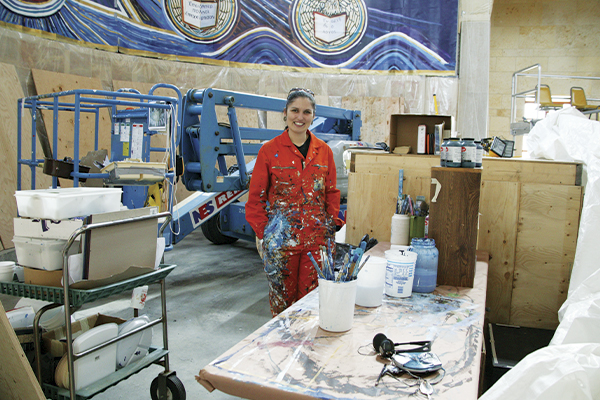
Alessandra is a native of Ravenna, Italy, where she lives and works as a master mosaicist. Alessandra graduated from the P.L. Nervi Art School and attended the Academy of Fine Arts in Ravenna where she specialized in decoration and mosaic. Her studio, Mosaici Antichi e Moderni, produced works based on contemporary designs, as well as on ancient mosaics. She has been assigned numerous commissions from all over the world, including a replica of the “Madaba Map,” an ancient mosaic map of Jerusalem that was discovered in Madaba, Jordan. Alessandra offers seminars and gives lectures in Italy and abroad, and participates in personal and collective international mosaic exhibitions. She fabricated over 400 square meters of mosaics that fill the Church of the Transfiguration.
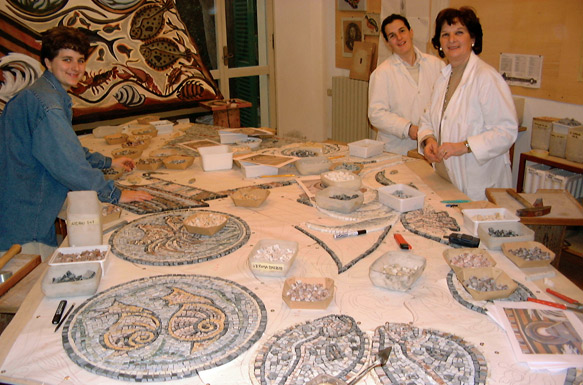
Originally from Belfast, Northern Ireland, Helen McLean adhered closely to the iconographic program outlined in the master art plan. McLean painted the processional path, apse mosaic, font floor, and ambo platform mosaics, first in small-scale cartoons, and later in full-scale renderings in situ. She also designed and fabricated the oculus window for the west wall, working with Architectural Glass Art in Louisville, KY. She collaborated closely with Regis Demange, providing drawings for the altar mensa, interior lintel, and pillars above and beside the interior west doors, and several of the interior capitals, and collaborated with Romolo Del Deo, designing the bronze work for the ambo and baptismal font bowls and gates.
